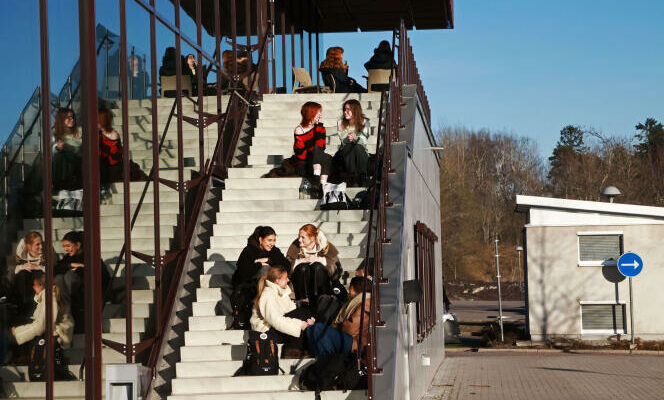Even the physics faculty at Lund University in southern Sweden is not spared. The Nobel Prize awarded in the fall of 2023 to one of its professors, the Franco-Swedish Anne L’Huillier, changes nothing: we have to make savings. Management is preparing a five-year plan, explaining how it intends to bring its finances back into the green. At this time, no layoffs are planned. But fixed-term contracts will not be renewed and the number of doctoral students will decrease.
Universities across Sweden are under pressure. In 2023, their common deficit will reach one billion crowns (89 million euros). The situation has gradually deteriorated, experiencing a boost over the past two years, with the dizzying rise in operating costs, which is no longer offset by funding, even though the conservative liberal government, supported by the extreme right, imposed on all central administrations – including universities – to reduce their spending by 0.5%.
In Stockholm, the department of economic history and international relations has already taken several initiatives to try to bring its budget back to balance. Teachers share desks, course length has been reduced by 15% and administrative time allocated to directors of studies has been cut. The department has also decided to no longer create new doctoral student positions for three years. “But these are one-off savings, which we cannot repeat and which have already been swallowed up by rising costs”observes the director of the department, Magnus Petersson.
Not owners of their premises
Each year, the university pays him around 60 million crowns, for a department which has 450 students and employs around 70 people: twenty-five teachers, around twenty researchers, between five and six administrative employees, and researchers under different types of contract. Magnus Petersson was appointed in 2021. “Since I took office, rents have doubled from 3 to 6 million crowns. Administrative costs increased from 3 to 4 million crowns, while social security contributions increased by 700,000 crowns”he explains.
The equation is increasingly difficult to solve, especially since credits are not growing as quickly. “This year we received 3.5% more money, but rents increased by 7.5%”, explains Mr. Petersson. Because, in Sweden, universities do not own their premises. Most of the lecture halls, laboratories and classrooms belong to the Akademiska Hus company, established in 1993, which rents them to universities, at a cost representing around 12% of their budget.
You have 44.91% of this article left to read. The rest is reserved for subscribers.
